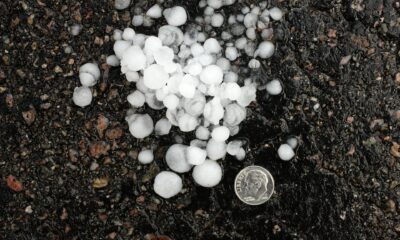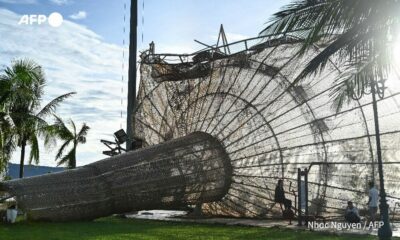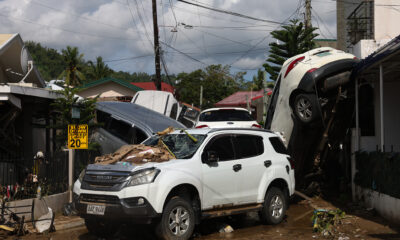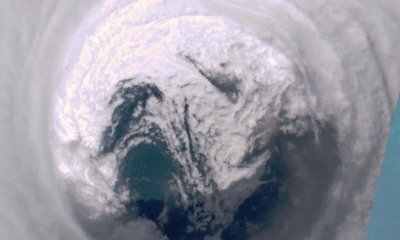News
‘The Water Came All at Once’: Gauteng’s Level 9 Storm Exposes South Africa’s Deepening Flood Crisis

‘The Water Came All at Once’: How a Level 9 Storm Turned Gauteng Into a Warning Sign
Gauteng woke up on Sunday to the kind of silence that only follows chaos. Streets were muddy, trees lay like broken matchsticks, and whole neighbourhoods sat in darkness after a Level 9 storm dumped more than 200mm of rain in just 24 hours.
But the timing was painfully symbolic.
Just days earlier, Amnesty International had released a hard-hitting report warning that flooding in South Africa’s informal settlements is no longer a seasonal inconvenience, it’s a full-blown rights crisis.
And this weekend’s storm made that warning feel less like a report and more like a prophecy.
A Province Underwater
As rain hammered the province through the night, authorities scrambled to open sluice gates at the Vaal and Bloemhof dams to prevent overflow. People living along riverbanks were urged to pack essentials and be ready to move at a moment’s notice.
By morning, the SA Weather Service had downgraded the alert to Level 6 for northern Gauteng and western Limpopo, and Level 4 for parts of Mpumalanga and eastern Limpopo, but the damage had already been done.
Social media was flooded with videos of cars drifting through Brownian rivers and trees uprooted along Joburg’s busiest roads. JMPD photos of toppled trees in the city centre went viral, with comments like:
“This isn’t weather anymore, this is survival.”
Life on the Edge of the Jukskei: ‘We Sleep With One Eye Open’
For communities living along the Jukskei River, the storm was not an anomaly, it was an annual trauma.
On the riverbank in Alexandra, Bongani Albertus from the Alexandra Water Warriors stared at the swollen water and shook his head.
“Give it a few weeks,” he said. “You won’t be able to stand here. The river rises all the way to those houses.”
He pointed to homes clinging to the embankment, many cracked or half-collapsed from years of water damage.
“It’s a risk,” he admitted. “But where must people go? Housing is a struggle. People choose danger because they have no choice.”
And across Gauteng, the stories sounded heartbreakingly similar.
‘My Blankets Were Floating’: Gauteng Residents Count Their Losses
In Soweto, 20-year-old Simphiwe Nyembe arrived home to find knee-deep water inside his shack.
“Everything was floating blankets, clothes, even the mielie meal. I threw it all out,” he said. “And I can’t dry anything because the rain keeps coming.”
Nearby, 60-year-old Thomson Nxumalo tried to fight the water off with makeshift cement barriers around his home.
“It helped a bit,” he said, “but we still can’t leave. Every rain is the same story.”
In Lenasia, sewage flowed through the streets after an old pipeline burst under pressure.
“We’ve tried every number,” resident Mandla Maphumulo said. “But with this rain, no one is coming today. Maybe not tomorrow either.”
Amnesty’s Verdict: Flooded and Forgotten
The storm echoed almost exactly what Amnesty International warned in its report Flooded and Forgotten a scathing assessment of how South Africa’s most vulnerable are repeatedly abandoned in the path of extreme weather.
The report’s key findings are damning:
1. Apartheid-era planning still dictates who lives in danger
Millions are still pushed into low-lying informal settlements with no safe alternatives.
2. Basic infrastructure is missing
No drainage. No paved roads. No waste collection. When rain comes, there is nowhere for water to go.
3. The upgrading of informal settlements is slow, uneven and plagued by red tape
Many projects stall due to corruption, disputes over land and bureaucratic delays.
4. Disaster responses are inconsistent
Communities are often relocated to areas just as vulnerable as the ones they left.
5. Seasonal floods aren’t even classified as “major incidents”
This means limited relief, no long-term support, and virtually no accountability.
The report argues that without urgent integration of Disaster Risk Reduction into city planning, South Africa will see more drownings, more relocations, and more heartbreak.
Communities Build Their Own Warning Systems
While officials debate plans and budgets, communities like Alexandra are doing whatever they can.
Kgabo Raphala, also from the Alexandra Water Warriors, explained how locals created an early flood-alert system using WhatsApp.
“When the Jukskei starts rising, we message all the families,” he said. “They leave everything and run to the community centre. It’s the only way to stay alive.”
But he’s frustrated.
“We’ve been promised solutions for years. Temporary relocation areas are supposed to be for six months people have been there for five years. Shipping containers meant for housing are just standing empty. Nothing moves.”
Climate Change Is Shifting the Goalposts
South Africans know summer storms. But climate experts say they’ve changed.
Amnesty’s report highlights findings from World Weather Attribution, showing that the catastrophic 2022 KZN floods, which killed more than 400 people, were made twice as likely by human-induced climate change.
Events that used to occur once every 40 years can now happen every 20.
That means informal settlements, already stretched to breaking point, will face these storms more often and more brutally.
Is Government Ready? Officials Say They Are
The Department of Human Settlements insists it is acting.
Spokesperson Tsekiso Machike said relocation sites are chosen based on thorough risk assessments by qualified engineers.
He disputed claims of slow progress, noting:
-
2,000+ informal settlements upgraded recently
-
R15 billion spent between 2021 and 2025
-
A further R14 billion planned until 2028
-
More than 4,000 settlements set for upgrades by 2029
But communities say the lived reality tells a different story: promises, delays, and relocation sites that flood just like the old ones.
A New Reality for Motorists and Residents
Authorities are urging residents to stay alert:
Safety for Residents
-
Monitor Saws alerts regularly.
-
Evacuate early if water rises.
-
Secure loose items and clear drains.
-
Avoid river crossings, bridges and low-lying roads.
For Drivers
-
Turn around at flooded roads, most flood deaths involve vehicles.
-
Reduce speed on wet surfaces.
-
Expect heavy delays and road closures.
A Storm That Says More Than the Forecast
The Level 9 storm wasn’t just a bout of severe weather, it was a glimpse into South Africa’s near future.
A future where climate change magnifies old injustices.
Where the poorest communities face the harshest consequences.
Where people like Albertus, Simphiwe and Nxumalo continue to rebuild, knowing the next storm isn’t a question of “if” but “when.”
The storm has passed for now.
But the warning it delivered could not have been louder.
{Source: Daily Maverick}
Follow Joburg ETC on Facebook, Twitter , TikTok and Instagram
For more News in Johannesburg, visit joburgetc.com



























